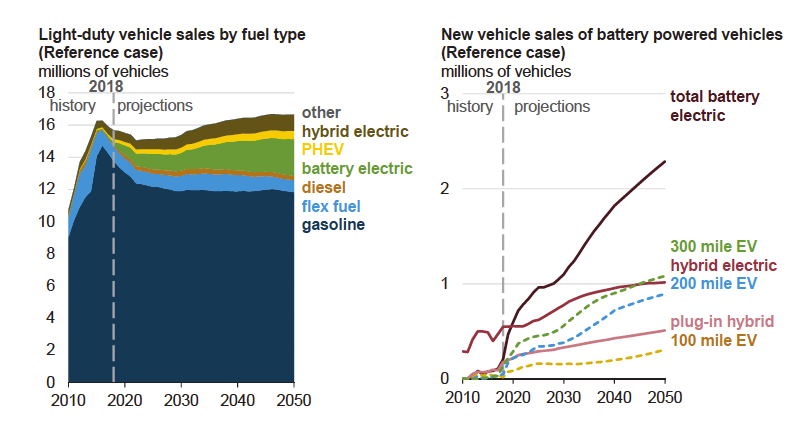US govt study sees electric car sales stuck in slow lane
Increased demand for battery materials used in electric vehicles has reignited interest in the mining sector now that the China-induced supercycle in commodities demand is levelling off.
But if you rely on forecasts of EV take-up from the US Energy Information Administration, you may well wonder what the hype is about.
The EIA Energy Outlook 2019, released last week, foresees uptake of electric vehicles in the world's second largest car market over the next 30 years that won't rev mining investors' engines.
According to the report, the combined share of sales attributable to gasoline and flex-fuel vehicles (gasoline blended with ethanol) declines from 93% in 2018 to 75% in 2050.


From EIA Energy Outlook, 2019
The EIA predicts electricity usage in battery powered, plug-in hybrid and hybrid vehicles to increase by 11.3% through 2050. That's impressive growth, but electricity usage by the country's light-duty vehicle fleet would still constitute less than 5% of the total.
Usage of electricity by transit buses is expected to grow at a 9.4% clip and constitute 11% of the total, but for intercity travel, electricity doesn't even feature in the projections.
According to the outlook, California's zero-emission vehicle regulation, which nine additional states have adopted, requires a minimum percentage of vehicle sales of battery-powered and and plug-in hybrids.


From EIA Energy Outlook, 2019
In 2025, the year the regulation and new federal fuel economy standards go into full effect, projected sales of battery-powered and plug-in hybrids is expected to reach 1.3 million, or about 8% of projected total vehicle sales.
That's a far cry from Chinese uptake of EVs. Last year around 1.1m so-called new energy vehicle were sold in the world's largest auto market, up nearly 70% from 2017.
In terms of the transportation industry as a whole and not just cars, electricity's share of fuel consumption in the US hardly registers.